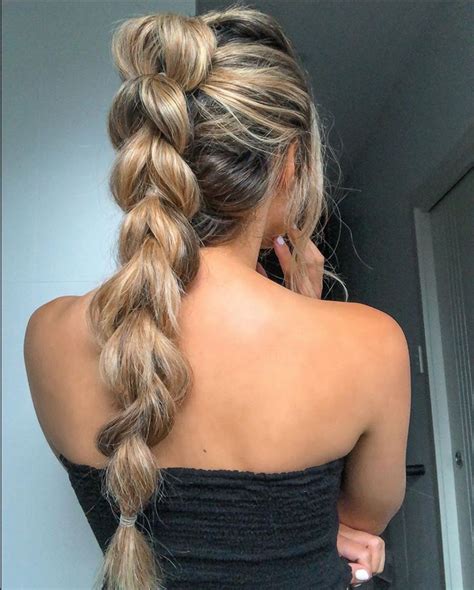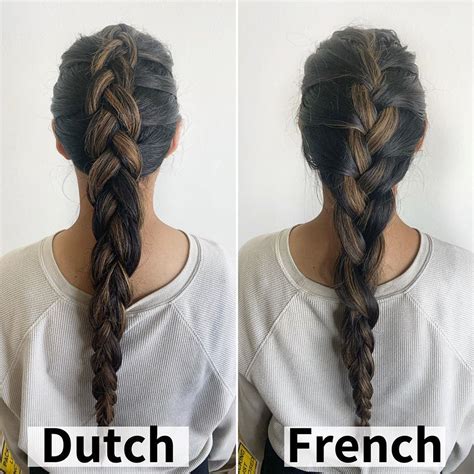Introduction
Braids have been a timeless hair accessory, with variations spanning cultures and eras. Among the most popular and versatile styles are the Dutch and French braids. Both techniques create intricate and visually appealing designs, but they differ in execution and appearance. This comprehensive guide delves into the intricacies of Dutch vs French braids, empowering you to choose the most flattering and suitable style for your unique locks.

Dutch Braid vs French Braid: A Detailed Comparison
| Feature | Dutch Braid | French Braid |
|---|---|---|
| Originating Country | Netherlands | France |
| Braiding Direction | Over-under, close to the scalp | Under-over, away from the scalp |
| Volume and Appearance | Flatter, denser, more prominent texture | Fuller, looser, more voluminous |
| Suitable Hair Types | All hair types, especially thin or fine hair | All hair types, especially thick or wavy hair |
| Styling Versatility | Ideal for updos, buns, and ponytails | Can be worn down or up, allowing for various hairstyles |
| Braiding Difficulty | Moderate to advanced (requires practice) | Beginner-friendly, easier to master |
| Time Required | Longer due to over-under technique | Shorter due to under-over technique |
Benefits of Dutch Braids
- Flattering and Concealing: Dutch braids lie flat against the scalp, making them ideal for concealing imperfections or fine hair.
- Secure and Long-Lasting: The over-under technique creates a stronger hold, resulting in braids that stay intact for extended periods.
- Textured and Eye-Catching: The dense, intricate texture of Dutch braids adds depth and dimension to any hairstyle.
Benefits of French Braids
- Voluminous and Romantic: French braids create a fuller, more voluminous appearance, perfect for special occasions or enhancing hair thickness.
- Beginner-Friendly and Versatile: The under-over technique is easy to learn, allowing even inexperienced braiders to achieve stunning results.
- Versatile and Adaptable: French braids can be worn down or up, incorporated into various hairstyles, and adorned with accessories for added flair.
Which Braid Is Right for You?
The best braid choice depends on your personal preferences and hair type.
- For a sleek, secure, and voluminous look, opt for a Dutch braid.
- For a romantic, flowing, and beginner-friendly style, choose a French braid.
Tips and Tricks for Perfect Braiding
- Practice Makes Perfect: Master the techniques by practicing regularly.
- Use a Mirror: A mirror will help you see the braid as it’s forming and make necessary adjustments.
- Apply Hairspray: Spray hairspray to hold the braid in place and reduce flyaways.
- Experiment with Accessories: Add ribbons, beads, or other hair accessories to enhance the braid’s appearance.
Creative Applications and Inspirations
- Dutch Braid Crown: Create a Dutch braid around the circumference of your head for a regal and elegant touch.
- Inverted French Braid Ponytail: Combine a French braid with a ponytail to elevate a classic hairstyle.
- Half-Up Dutch Braid: Braid only the top section of your hair, leaving the rest free-flowing for a whimsical look.
- Braided Bangs: Dutch or French braid bangs to frame your face and add a touch of style.
Customer Testimonials
“I love Dutch braids! They make my thin hair look thicker and smoother.” – Sarah, 32
“French braids are so easy to do and add a chic touch to any outfit.” – Emily, 25
“I’m a beginner at braiding, and French braids are a great way to start.” – Jessica, 18
Conclusion
Whether you prefer the sleek elegance of a Dutch braid or the voluminous charm of a French braid, both styles offer timeless versatility and endless styling possibilities. By understanding the nuances of each technique, you can unleash your creativity and elevate your hairstyles to new heights. Embrace the art of braiding, experiment with different variations, and celebrate the beauty and versatility of your unique tresses!
